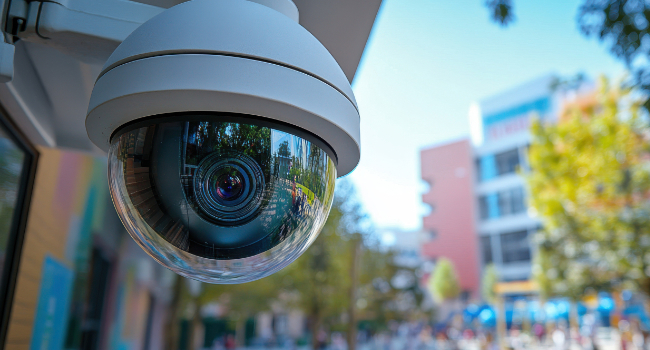
The Future is Happening Outside the Cloud
For years, the cloud has captivated the physical security industry. And for good reason. Remote access, elastic scalability and simplified maintenance reshaped how we think about deploying and managing systems.
But as the number of cameras grows and resolutions push from HD to 4K and beyond, the cloud’s limits are becoming unavoidable. Bandwidth bottlenecks. Latency lags. Rising storage costs. These are not abstract concerns.
The are daily operational headaches. It is time to look beyond the cloud—not to abandon it, but to rebalance how we architect video security systems. The answer lies at the edge.
Why Edge Matters More Than Ever
The basic premise of edge computing is simple: process data where it is created. For video security, which means analyzing video directly on the camera or on a nearby device rather than funneling it to a centralized server or cloud environment. This approach is not new, but it is evolving fast, thanks to AI and containerization.
Modern edge-processing cameras are not just capturing video; they are interpreting it in real time. They can detect objects, read license plates, recognize behaviors, all before a single frame leaves the device. This cuts down on bandwidth usage, slashes latency and frees up cloud resources for tasks better suited to centralized processing, like archival storage or system-wide analytics.
It is a smarter, faster and more cost-effective model, especially for organizations managing hundreds or thousands of endpoints. But edge intelligence alone is not enough. To move the industry forward, we need an open, scalable and flexible way to deploy and manage the AI that powers these devices. That is where containerization changes the game.
Think App Store, Not Appliance
When you buy a smartphone, you are not just buying hardware, you are buying into a platform. That device can be customized endlessly through apps. It can evolve with your needs. It can be upgraded, repurposed or reconfigured on demand.
This is exactly the kind of flexibility that security and operations teams need. Our industry has traditionally been trapped in a cycle of closed systems, with hardware and software locked together, updates requiring forklift, rip-and-replace cycles, and innovation crushed by proprietary/vendor lock-in.
Enter Docker and the World of Containers
Containers are lightweight, self-contained packages that include everything an application needs to run—code, libraries, configuration files. They are hardware-agnostic and OS-agnostic. They work the same way whether you are deploying to a laptop, a server, or an edge device like a security camera.
For security integrators and developers, this is a huge opportunity. You can develop a license plate recognition app, a fall detection algorithm, or a queue monitoring tool, wrap it in a container, and deploy it to any camera that supports Docker. No customization. No rework. Just plug and play. The larger IT world has been doing this type of development for years now, so it is time the security world caught up.
Edge Swarms: Power in Numbers
Is the edge powerful enough to process all the AI-based analytics needed? Great question. One of the most exciting frontiers is cooperative edge computing, cameras and devices pooling their resources to function as a distributed system. Docker Swarm is a notable example. It allows containers to be orchestrated across multiple edge devices, sharing compute power and balancing workloads dynamically.
Think of it like a mesh network of smart cameras, each one contributing to a larger goal. One camera might manage license plate recognition. Another might run people tracking. A third might store recent metadata. Together, they create a resilient, adaptive and self-sufficient cluster that does not crumble if a single node fails.
This kind of edge collaboration reduces the need for expensive central servers or costly cloud compute cycles. It makes systems more resilient to outages. And it is especially valuable in environments where internet connectivity is not guaranteed, such as remote sites, critical infrastructure and disaster recovery zones.
Hybrid Is the New Normal
Let us be clear: the cloud still plays a vital role. But its role is shifting. Instead of always being the primary workhorse, the cloud becomes the coordination layer. It manages long-term storage, provides high-level analytics across locations, and enables remote access for supervisors and stakeholders. Meanwhile, the heavy lifting—real-time detection, alerts and decision-making—happens at the edge.
This hybrid model is more sustainable and aligns better with regulatory realities. In regions with strict data residency laws or privacy requirements, edge processing allows sensitive footage to still be on-site while still receiving help from centralized oversight.
It also aligns better with budgets. Cloud costs can rise quickly when every frame is streamed and stored remotely. Edge processing cuts that volume down to essentials, where metadata, not megabytes, are passed about major events. This preserves bandwidth and helps cloud storage and retrieval stay affordable.
The Industry Must Stay Open
The biggest risk to this promising future is closed systems. If we repeat the mistakes of the past by locking analytics behind proprietary platforms, requiring vendor-specific integrations, and limiting developer access, we risk wasting the potential of the edge. Open standards like Docker keep the playing field level. They allow anyone to contribute. They let integrators build custom stacks for their clients. They encourage innovation from corners of the industry that might otherwise be locked out.